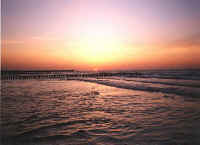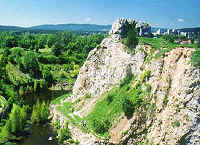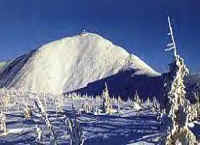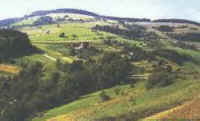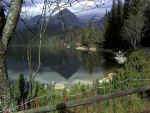 |
The southern one-third of Poland consists of various upland areas and adjacent or intervening lowlands. Along the southern border are the Carpathian and Sudeten mountains. The highest elevation is Rysy (2,499 m) in the High Tatra range of the Carpathians. The eastern extremes of Poland display characteristics common to eastern Europe, but the rest of the country is linked to western Europe by structure, climate, and the character of its vegetation. |
